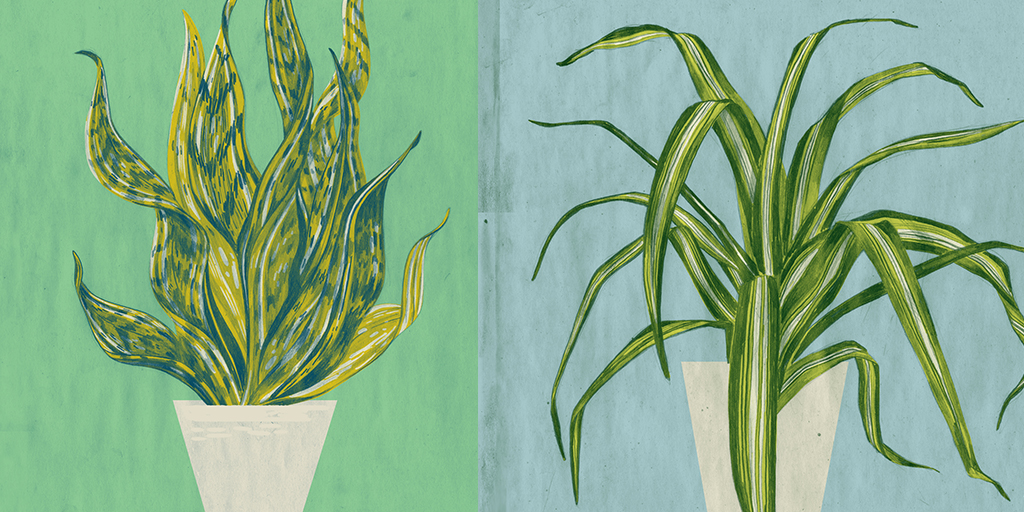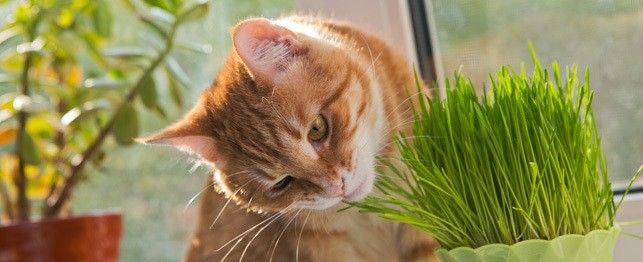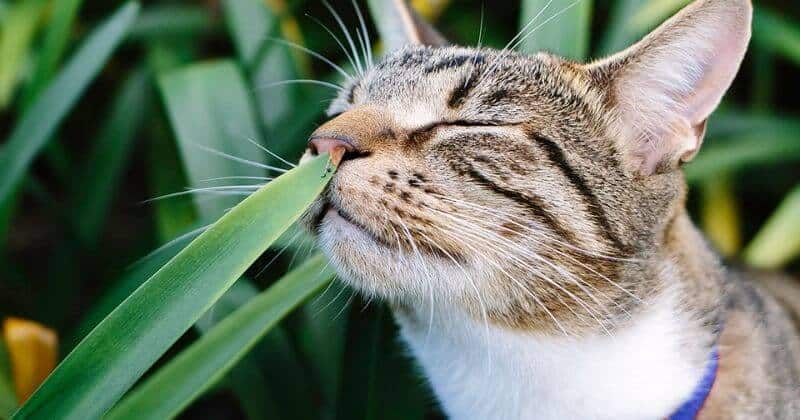Cats are mysterious creatures. While they make a great pet with their warm cuddles and therapeutic purring, they seem to do things that have no logical explanation. A perfect example of this phenomenon is when this obligate carnivore goes around chewing on your house plants. To make things worse, they won’t opt for the plants that are wilting away and are almost dead. Instead, they’ll go straight for the most expensive and most healthy-looking plant you have.
As annoying as this strange habit is, it can also prove to be very dangerous, fatal even, for your cat. Most houseplants are not safe for your cat to ingest, and if your cat keeps nibbling on them over a duration of time, that can culminate into a series of health problems that can tragically cut down your cat’s life span.
So, we’re here to help you understand why your cat seems to be more interested in eating the plants than they shouldn’t be and how we can keep them from eating your houseplants.
The Big WHY?
Now, if you’re looking for a definitive answer as to why cats like to chew on plants, we’re sorry to disappoint, but there is no conclusive reason. Cats sometimes do things just because they can.
We do, however, have our theories.
The first theory is pretty straightforward. Cats may just like the taste of plants. They may serve as a treat or a new taste to add to their pallet beyond their usual carnivore meals.
Out in the wild, it isn’t completely unheard of for a cat to opt for an occasional nibble on a plant. You might have even seen cats chew on grass from time to time, which brings us to our second theory. We consider the possibility that plants might offer cats added nutrients and fiber, which will improve their overall health, especially their digestive health.
A theory about why indoor cats like to chew on houseplants is that perhaps they simply do it out of sheer boredom. The leaves fluttering in the fan or air conditioner winds might catch their eye and end up becoming their chew toy.
What plants are toxic, and what plants are not?

It is always important for any responsible pet owner to arm themselves with complete knowledge of their pet’s possible harm. For cat owners who also enjoy gardening and keeping plants, they must know which plants need to be kept strictly away from their felines. Here are a few of those plants:
- Avocado
- Boston Ivy
- Lilies*
- Hydrangea
- Mistletoe
- Cactus
- Daffodil
- Marijuana
Note the star next to lilies; that’s there to emphasize the fact that lilies are very dangerous for our felines. Exposure to lilies can cause your cat to suffer from kidney failure.
Nevertheless, there are some plants that you can keep that won’t pose a threat to your feline’s life. These include:
- Orchid
- Bamboo
- Ferns
- Spider Plant
- Begonia
- Prayer Plant
The point to be noted is that while these plants aren’t dangerous to your cat’s health if your cat does ingest them on occasion, it will lead to gastrointestinal problems such as nausea and diarrhea.
How to keep cats away:

So what does one do if they like both cats and plants? If you’ve got a green thumb and you want your plants to co-exist peacefully with your cat, there is good news. There are certain steps you can take to keep your cat from eating your houseplants.
Make the plants stinky (at least to your kitty)
Your cat’s sense of smell is very strong and very sensitive as well and so using smells to deter their behavior is a common trick used. To stop your cat from chewing, digging, and toppling over your plants is to make them smell unappetizing.
There is a wide range of natural options that you can opt for. Citrus is a great example. Cats hate the smell of citrus so leave a lemon or orange peel in the soil of your plant to keep them away. However, be sure not to use any concentrated oil since it can be toxic for your cat.
Another smell that cats dislike is cayenne pepper. Sprinkle a bit around the plant, and your cat will stay away from it. However, use cayenne pepper with caution. If this spice finds its way onto your cat’s paws, it can cause severe irritation and burning.
Bitter apple is also a popular cat repellent. The plus side of this repellent is that the smell goes unnoticed by us humans. You can also use diluted vinegar and spray it on the leaves. It won’t hurt your plant and will keep your cat away.
However, using these repellents is usually hit or miss. Sometimes cats will be deterred by the smell, and sometimes they will be undeterred. Moreover, these repellents aren’t a one-time thing. Once the smell wears off (usually after a few days), you’ll have to repeat the process all over again.
Opt for plants that your cat doesn’t like

There are a lot of plants that your cat doesn’t like at all, and are non-toxic. Take rosemary, for example, a beautiful plant that thrives indoors and one that your cat hates! You can even opt for plants such as roses that have thorns. One prick will be enough to deter your cat.
Fun fact: there is a plant that is called “scaredy-cat,” which your cat is afraid of!
Placement is key
Where you’ve placed it, the plant in your house also plays an important role in keeping them away from your cats. Now we know that is easier said than done, considering how it is your cat’s instinct to jump and climb on high surfaces. One possible solution is to keep the plants in a hanging basket that is not hung near any shelves or surfaces that your cat can climb onto. If this works out well with the non-toxic plants, and if you’re confident that the plants are safe from your cat’s grasp, you can even hang the plants that you like but are poisonous. Just make sure the plants aren’t too high for you to reach and that you water them on time.
Another possible solution is to keep the plants in areas that are off-limits to your cat or in places that your cat seems to avoid in general. This isn’t the best option because your cat has a mind of its own and will go wherever they please, and the more you stop them, the more they want to go there.
Discipline your cat
If you see your cat making their way over to your plants for a quick munch, stop them before they get a chance. Clap your hands very loudly or use a firm and loud voice to say “no” or “bad kitty.” You can even keep a spray bottle handy and squirt your cat with a bit of water every time they make their way to the plant. Your cat will associate the unpleasant sensation or sounds with eating the plant and will thus stop.
However, if you plan to go down this route, you’ll need to do it in the initial eating stages when you first catch your cat in the act. This will require that you keep a close eye on your cat and are always prepared for their attack.
Don’t let your cat get bored.

As per the theory we mentioned, boredom can be a reason why your cat shows interest in your houseplants. Make sure that you keep your cat stimulated. Play with them regularly, give them a toy or a light to chase around, and keep cat trees and scratching posts at home. All of these things appease your cat’s instincts and will keep them happy.
Give your cat their plants to enjoy
If your cat is keen on eating greens, give them some of their own. You can easily find “cat grass” available in pet stores that are completely healthy for your feline. Wheatgrass is another option that you can even plant yourself and can be consumed by your cat.
Another popular option is the catnip. Cats love this plant!
Conclusion:
So there you have it, your guide on how to keep both cats and plants in the same house. However, if your cat seems obsessed with eating the plants, it may be a sign of their diet falling short of an important nutrient which they are seeking in the plants. Don’t fall under the assumption that they’ll make up for what their main meal is lacking from plants. Too much exposure, even to non-toxic and safe plants, can lead to health issues, especially vomiting and diarrhea. As nasty as it is for us to clean up, it also causes extreme discomfort to your cat, and it is best to take the precautions needed. Make sure to consult your vet for a complete checkup.
